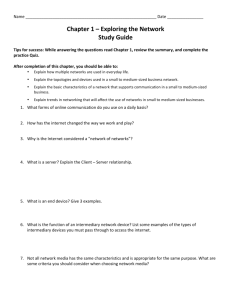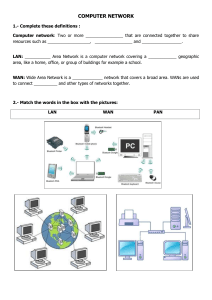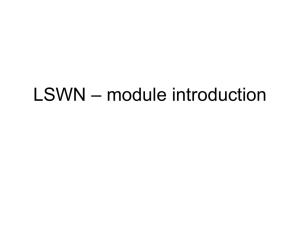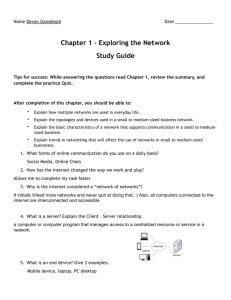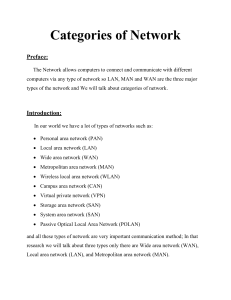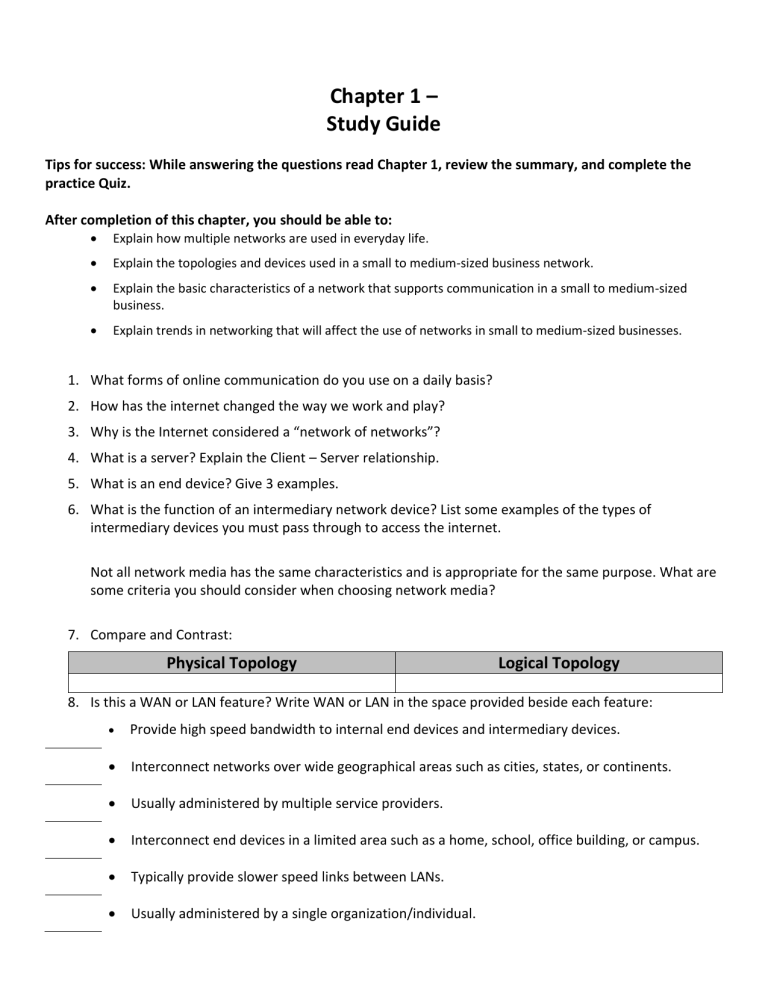
Chapter 1 – Study Guide Tips for success: While answering the questions read Chapter 1, review the summary, and complete the practice Quiz. After completion of this chapter, you should be able to: Explain how multiple networks are used in everyday life. Explain the topologies and devices used in a small to medium-sized business network. Explain the basic characteristics of a network that supports communication in a small to medium-sized business. Explain trends in networking that will affect the use of networks in small to medium-sized businesses. 1. What forms of online communication do you use on a daily basis? 2. How has the internet changed the way we work and play? 3. Why is the Internet considered a “network of networks”? 4. What is a server? Explain the Client – Server relationship. 5. What is an end device? Give 3 examples. 6. What is the function of an intermediary network device? List some examples of the types of intermediary devices you must pass through to access the internet. Not all network media has the same characteristics and is appropriate for the same purpose. What are some criteria you should consider when choosing network media? 7. Compare and Contrast: Physical Topology Logical Topology 8. Is this a WAN or LAN feature? Write WAN or LAN in the space provided beside each feature: Provide high speed bandwidth to internal end devices and intermediary devices. Interconnect networks over wide geographical areas such as cities, states, or continents. Usually administered by multiple service providers. Interconnect end devices in a limited area such as a home, school, office building, or campus. Typically provide slower speed links between LANs. Usually administered by a single organization/individual. 9. Explain the difference between and Intranet, Extranet and Internet: 10. Give some key characteristics of each type of Internet connection: a. Cable – b. DSL – c. Cellular – d. Satellite – e. Dial-up Telephone – f. Dedicated Leased Line – g. Metro Ethernet – 11. Explain the difference between a traditional dedicated network and a converged network. 12. What is a Fault Tolerant Network? 13. Compare and Contrast: Circuit Switched Networks Packet Switched Networks 14. How is QoS used to make congested networks more efficient? 15. Explain the three goals of network security: a. Ensuring Confidentiality – b. Maintaining Communication Integrity – c. Ensuring Availability – 16. List some Advantages and Disadvantages of the BYOD trend: 17. What are some things that have led to the need for an increase in Video Communication? 18. What are some benefits of Cloud Computing? 19. Explain Powerline Networking: 20. Give examples of security solutions: Home/Small Office Large Corporate Network 21. What is the CCNA certification and what are some benefits of obtaining the CCNA?
